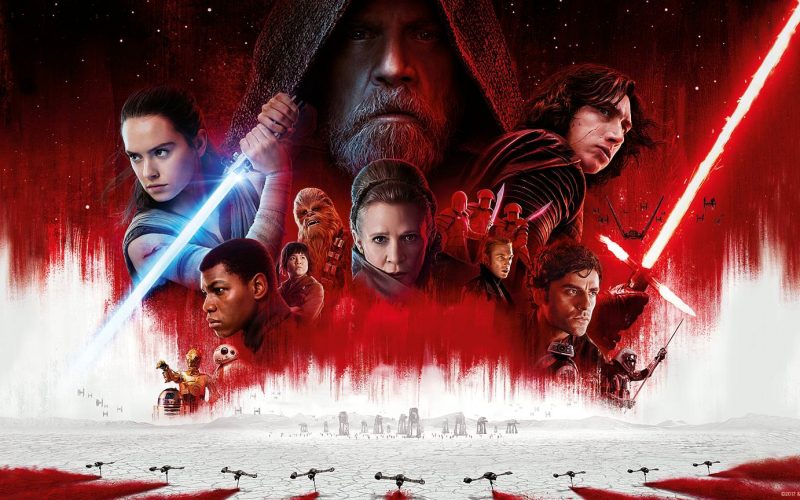Star Wars: The Last Jedi (2017).
***** SPOILER WARNING *****
The following article is completely spoiler filled and is not intended for those who firmly plan on seeing Star Wars: The Last Jedi and haven’t yet done so. If you want to know how I rate it then skip to the score at the end of the article. The reasoning behind this is that, like The Force Awakens, anyone with even a passing interest in Star Wars will see it irrespective of what the critics say, so instead I’ve decided to give you my deep, uncensored analysis of the film which is meant to be ingested AFTER you see it. The film, it’s plot and twists will be laid bare with no stone unturned. You have been warned!
Star Wars: The Last Jedi is the eighth film in the main saga and the ninth Star Wars film (not counting the two Ewok films). It’s also the third Star Wars film to be released under the control of Disney since 2015’s The Force Awakens. As you’ll see from my recent in-depth retrospective on that film, it’s a film with much to admire and celebrate but also one with a great many flaws that it seems many hardcore fans aren’t willing to accept as they keep referring back to how bad George Lucas’ prequels were as some sort of excuse for any subsequent films to get a pass as long as they’re better than Episodes I -III.

Given this somewhat experimental approach to writing a film review (it’s almost a retrospective of a new film as it’s only really intended for those who’ve already seen it), I’ll eschew my own style and go in hard. The film’s opening crawl is standard Star Wars fare and nothing that’s particularly extraordinary. This leads into an opening space battle with Poe Dameron at the fore of the Rebel’s defence against the First Order’s terrifyingly huge Dreadnaught, a supermassive Star Destroyer with planet-smashing capabilities. We are reintroduced to Domhnall Gleason’s sneering General Hux. If I thought he was a pantomime villain in The Force Awakens then he amps that up to a considerable degree here. Throughout the film he’s alarmingly over the top and to see yet more terrible acting from the usually talented Gleason is such a shame. The opening comedic exchange between Poe and Hux with Poe pretending he’s been put on hold would be perfectly acceptable if this film were a comedy. There’s always room for a bit of humour in a Star Wars film, but opening a film with comedy this broad immediately sets out something that won’t apply to everyone but will have great importance to those who grew up with the original trilogy. Namely that this isn’t a film cut from the same cloth as the original trilogy, it’s something quite different, tonally speaking at least.
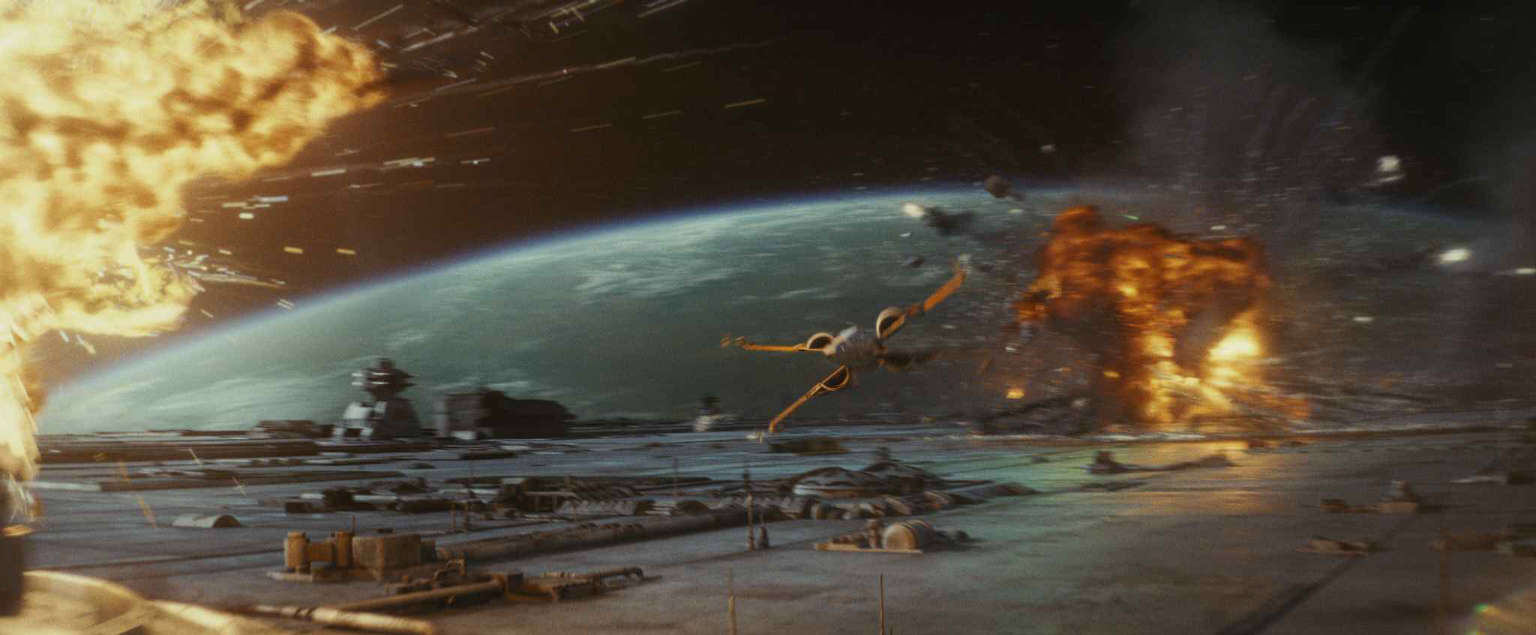
This broad humour, often bordering on camp with a mix of slapstick, will reoccur throughout. Quite how you feel about this will inform your subsequent enjoyment of The Last Jedi. Poe is seemingly invincible in the subsequent attack as he single handedly disarms the entire top section of this colossal ship. We learn that Poe is something of a hot headed maverick who’s willing to disobey orders to get the job done. Later on he’ll learn that he needs to think of the bigger picture and trust his more experienced superiors. It’s hardly complex character development but he’s at least a far more prominent player here, filling in the void left by the death of Han Solo.
We are also reintroduced to Leia, C-3PO, BB-8 and Finn. Finn’s timely regaining of consciousness after his confrontation with Kylo Ren in the previous episode raises the question of just how much time has passed and as we’ll soon find out, The Last Jedi takes place almost immediately after The Force Awakens. The manner in which he revives, wearing a frankly ridiculous fluid-filled suit (the hardcore fan in me presumes it’s Bacta Fluid), is yet more on the nose, overtly slapstick comedy. Some may like this, personally I found it completely at odds with the film I both wanted and expected. As I’d later find out, it continued to be an aspect of the film that would proliferate it and make me feel something that I’d usually save for the conclusion of such an article, that this simply isn’t MY Star Wars and certainly in terms of tone and style feels significantly divorced from the original trilogy.
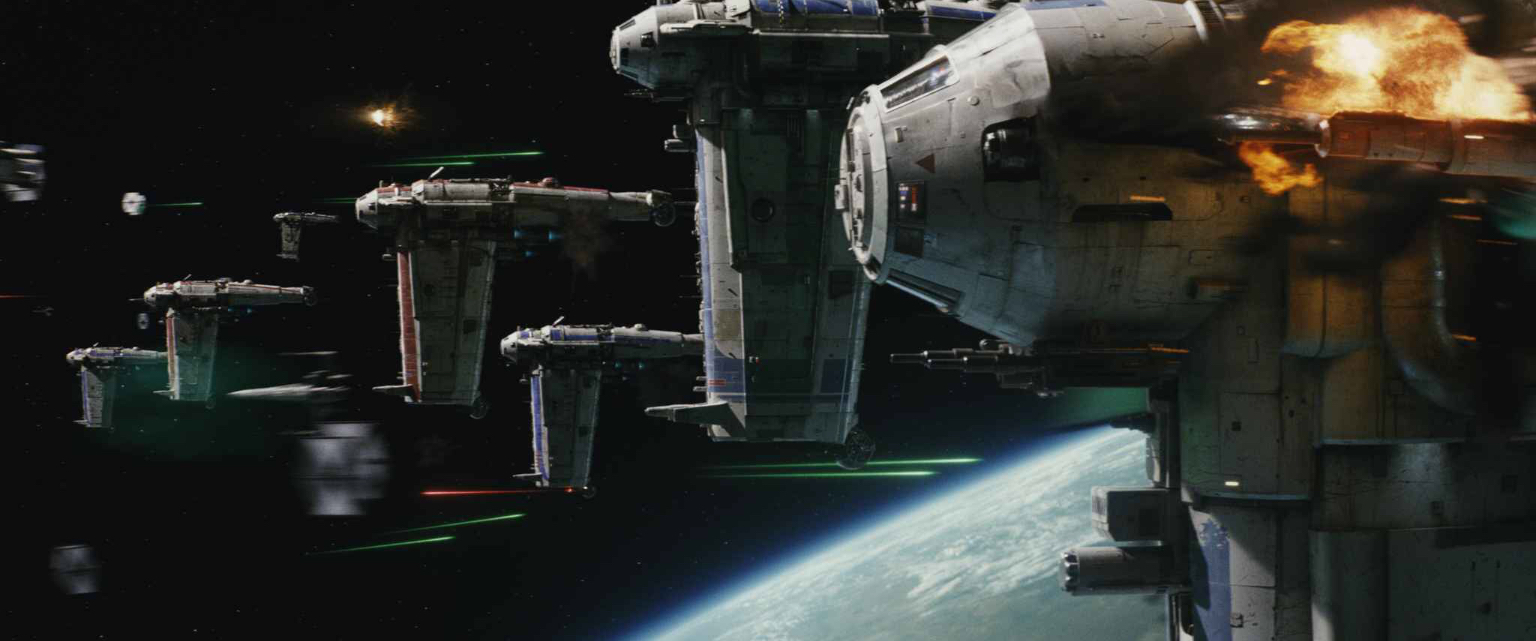
One scene that has already started to cause a disturbance in the Force amongst fans is the feint that Rian Johnson pulls with Leia’s assumed death as the bridge of her ship is destroyed causing her to be sucked out into space. Whilst it hasn’t been formally established within this new trilogy, this older Leia is clearly Force-adept as she is somehow able to survive not only the initial violent explosion but also the hard vacuum and freezing temperatures of space. Then we are treated to what I’ve heard referred to as ‘Mary Poppins in space’ as Leia Force-pulls herself back to her ship. I think the way I’ve described it leaves no need for me to tell you what I thought of this unexpected misdirection on Johnson’s part. Yet another questionable choice coupled with less than stellar execution.
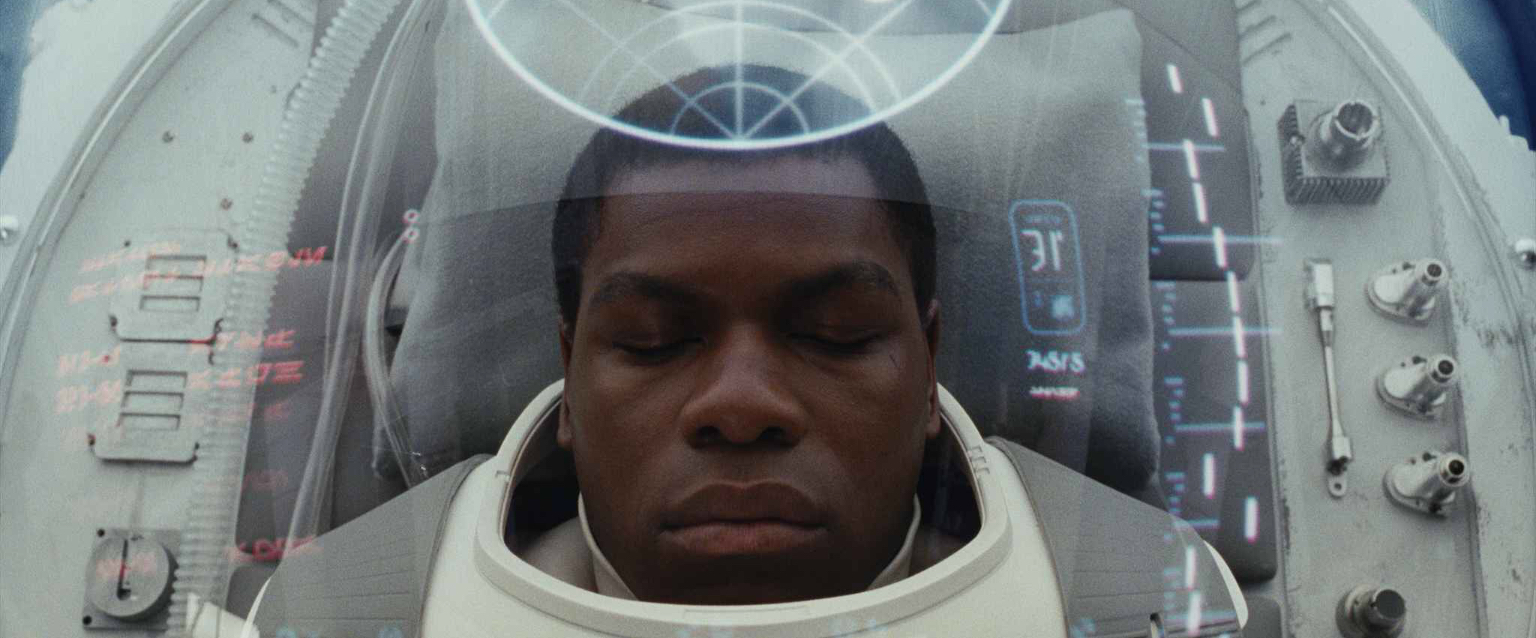
Following the space battle we are returned to the island where Rey has presumably had her hand outstretched for the last two years in front of a constipated looking Luke Skywalker. We see briefly a repeat of Rey approaching Luke and offering him his long lost laser sword but the awkward, silent exchange we’d previously seen doesn’t happen. By now I’d half hoped for Luke’s long awaited opening line to be one of the oft seen internet memes such as “There was a hand with that. Did you bring that too?” As punishment for such a thought, what we’re finally rewarded with is Luke snatching the lightsaber from Rey and nonchalantly tossing it over his shoulder. Now let’s take a moment to examine this. Much has been made of Rian Johnson’s intention to subvert expectation and take the series in new directions. If that intention is to reward two years of anticipation, questions and patience with a cheap, out of character gag then I’m sorry but that just won’t wash. It pays short shrift to the setup put in place by the last film, is yet more of this out of place humour, and moreover, smacks of a lack of direction and proves my suspicions that this proposed trilogy wasn’t really that well sketched out from the start.
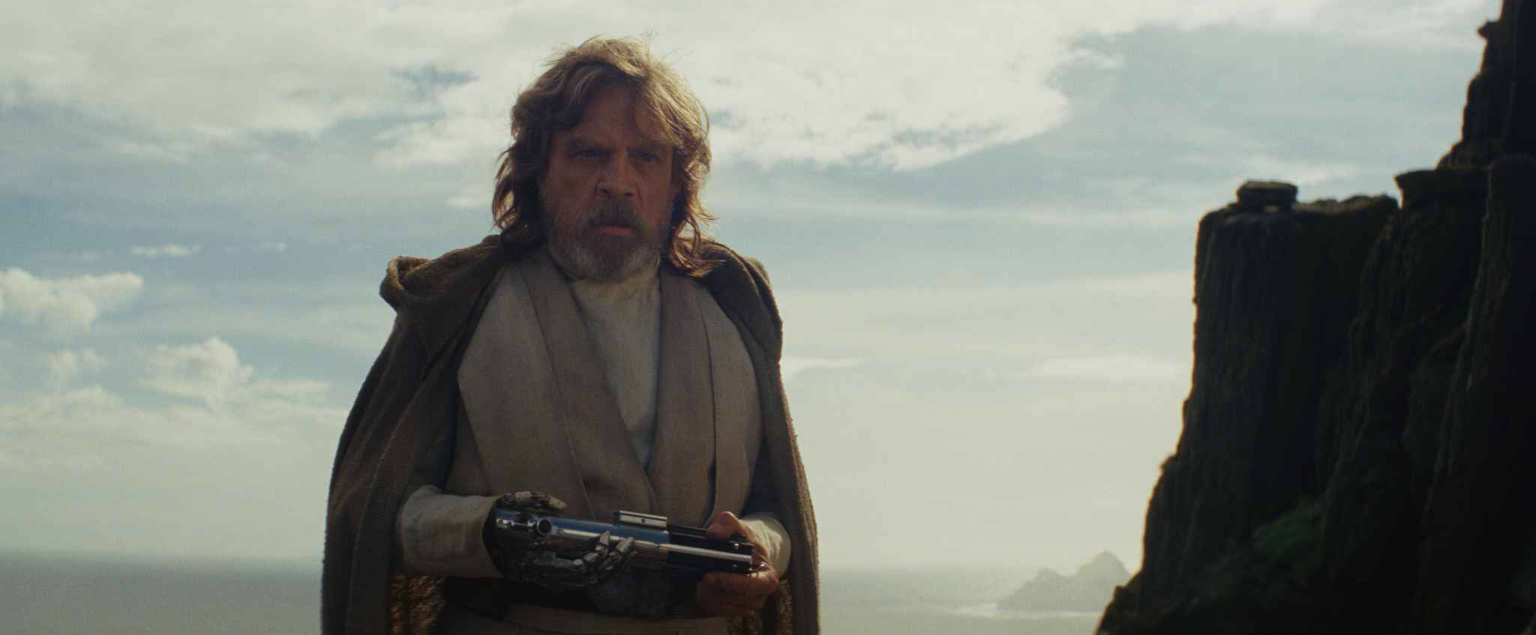
The subsequent scenes with Rey and Luke mostly involve Rey’s desire to learn the ways of the Force conflicting with Luke’s curmudgeonly demeanour and refusal to train her. Obviously her persistence wins over (to a degree) and the whole thing is a mixture of both the cliched and frankly absurd. Remember when you first heard about this new trilogy following on from the beloved originals? Remember how high on that wish list was to finally see Luke milking a huge sea-lion/ant-eater hybrid and then drinking said green liquid and getting it all over his beard? No, me neither. It’s one of many little scenes that are a microcosmic representation of Rian Johnson’s desire to put a very unique stamp on this film. The same goes for the strange little troll creatures dressed like nuns who tend to the sacred Jedi island. To paraphrase Obi-Wan Kenobi, whether you like this kind of bizarre, off kilter humour in your Star Wars films or not depends very much upon your own point of view. More power to you if you did, I really didn’t and that’s putting it mildly.
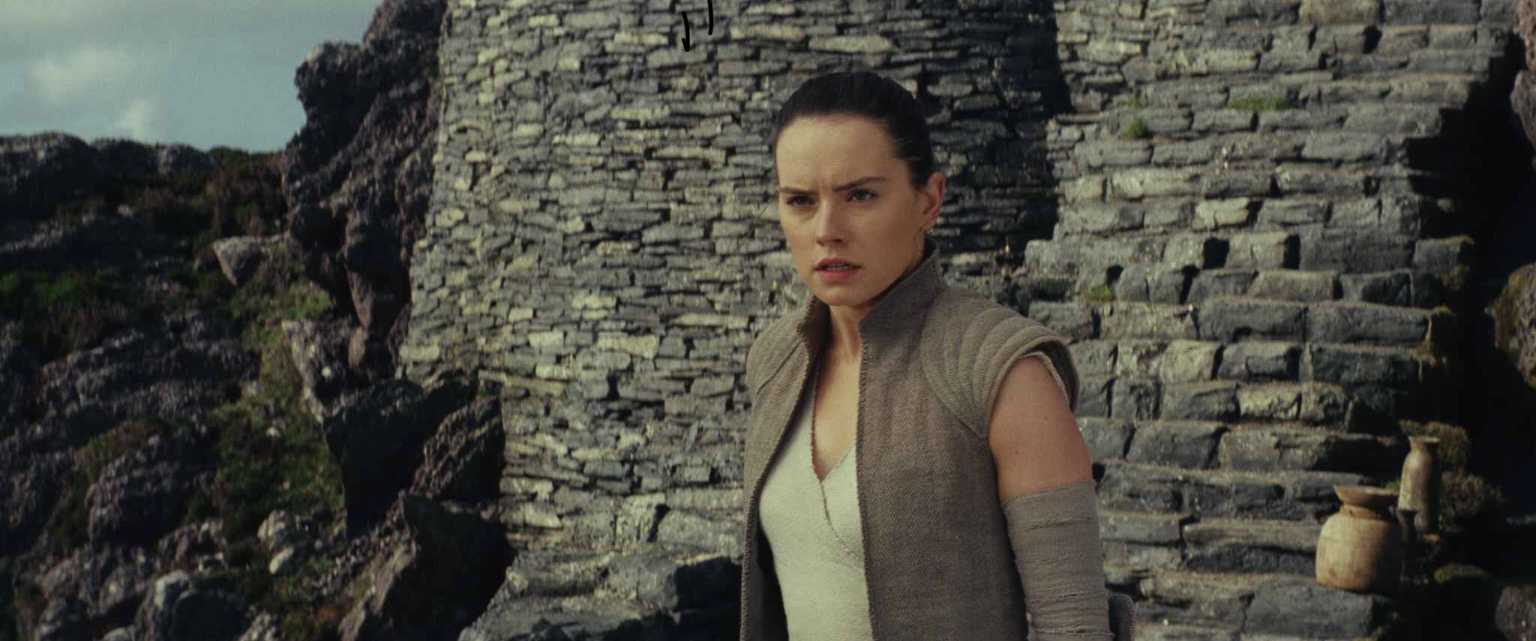
Here with Luke and Rey, the bulk of the unanswered questions from The Force Awakens should be addressed. Yes, we’re reminded that Luke failed to keep a reign on young Ben Solo’s dark tendencies but we already knew this and are given scant additional detail only frustrating snippets. Luke later confessed that he thought he could teach Ben the ways of the Force but that Snoke (still a terrible name) had already worked his influence on him. This leaves a huge, unexplained expository gap as to exactly how Snoke became involved in Ben’s development and push towards the dark side of the Force. Did this happen before or during his training with Luke and how did he do it? If there was a lack of cohesion regarding the overarching narrative in The Force Awakens, there was always the rightly held expectation that such issues would be addressed in this film. Sadly this isn’t the case to any satisfactory degree.
We’re still not given an answer as to how Luke’s blue lightsaber was retrieved from Bespin even though in The Force Awakens, Maz Kanata told us that it was “a story for another time”. Surely that time is now? The lack of any follow-up solidifying the lazy writing of both films. Even Luke seems unfazed by the fact that Rey turns up with something that he lost seemingly beyond retrieve several decades ago. It’s stuff like this that robs the characters of any organic feeling of natural behaviour and therefore diminishes the validity of the story and the film as a whole.
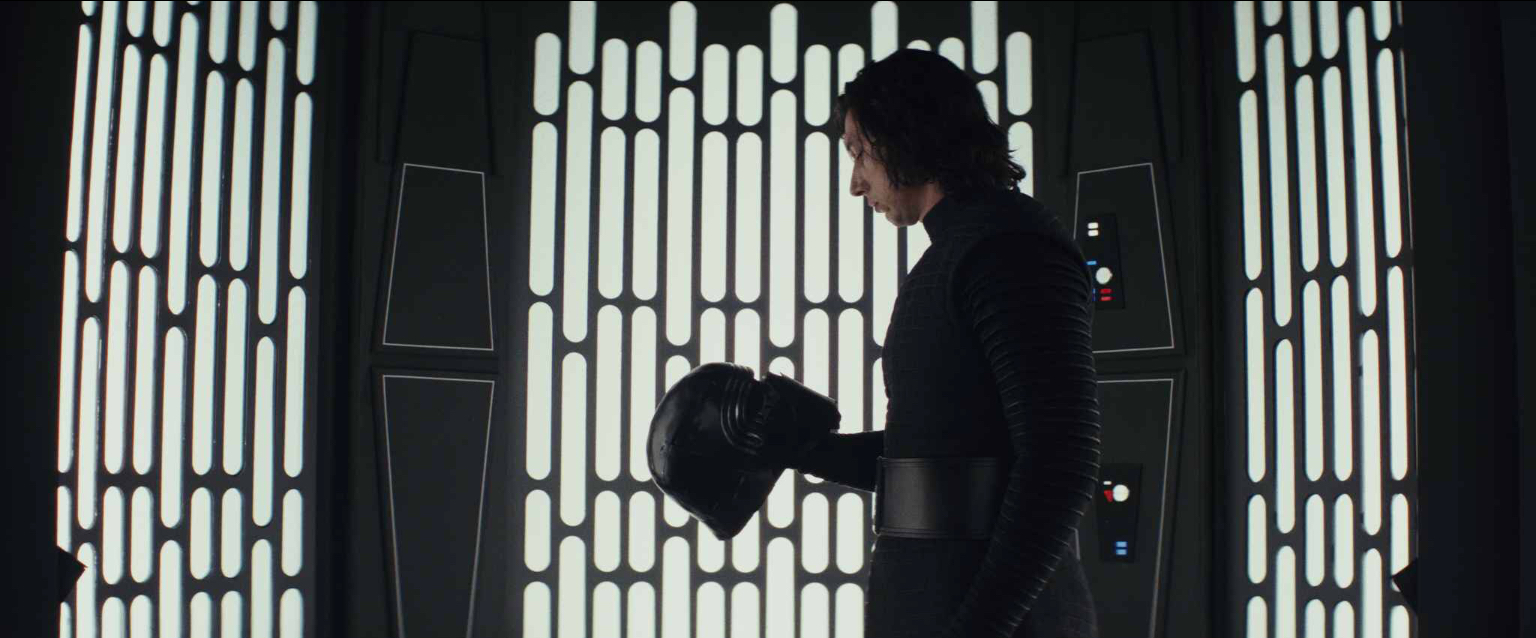
The film’s biggest drag involves the First Order’s “pursuit” of the retreating Rebel fleet. Within this remarkably long and drawn out portion of the film we see Finn and his newfound friend Rose embark on a side mission to find a famed Codebreaker to hack into the tracking systems of the pursuing lead ship. This whole subplot is painfully contrived and relies on lazy plot contrivances of the very worst kind. Rose’s convenient realisation that they need a codebreaker leads Poe to decide to call on Maz Kanata from the previous film, whom, it turns out, conveniently knows the only codebreaker in the galaxy that can pull off such a task. Finn and Rose’s ensuing “adventure” feels like a complete departure from the established and expected Star Wars norm. As much as I’m all for pushing longstanding franchises into exciting new directions and territories, this entire subplot is neither exciting or entertaining. The ludicrous and wholly unnecessary “horse race” scene, with its woeful special effects and John Boyega’s hilariously unconvincing attempts to mimic the movement of being on the back of the CGI animal provided laughs aplenty but not in a good way. I’m sure it wasn’t intended to cause the nervous laughs of disbelief that were clearly audible in the showing I attended. Taking the results of Finn’s subplot to its conclusion with the double cross by Benicio Del Toro’s over the top character of DJ, it really serves no significant narrative purpose to justify its length and existence. It’s ill-fitting within the Star Wars I know and love and this entire section could and should have been removed from the script in the writing stage to the benefit of the final film.
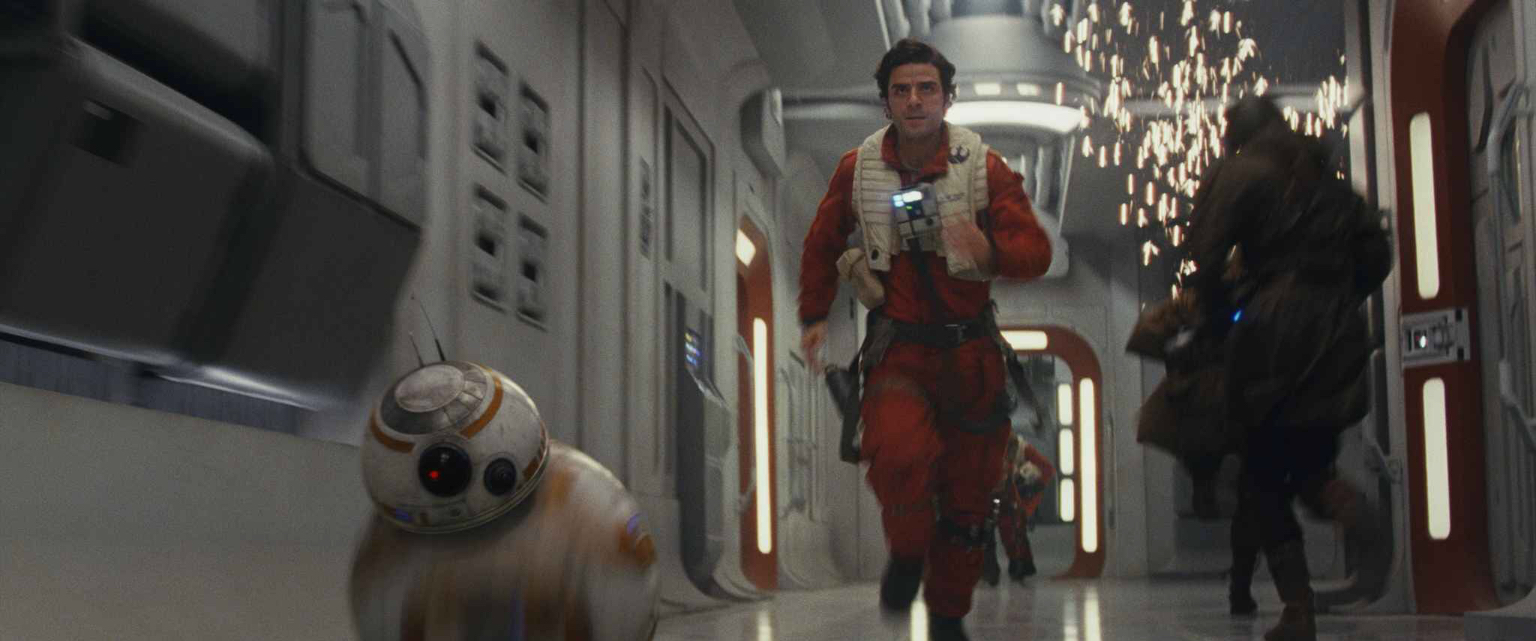
The First Order’s pursuit of the rebels drags on for what feels like three quarters of the already bloated runtime and has an abundance of plot illogicalities. Firstly, the pursuit happens at a snails pace with the First Order seemingly gaining no ground at all. There’s not a hint of speed or the feeling that any of the ships are moving beyond a crawl, robbing it of any genuine dramatic tension and several questions are raised regarding the film’s logic. How is the main Rebel ship able to withstand such a prolonged barrage of enemy fire? Why don’t the First Order just send a swarm of Tie Fighters to engage it or make a few of the smaller Star Destroyers make a brief jump to hyperspace ahead of the Rebels and intercept them?
As we later find out, the pursuing fleet is decimated by Vice Admiral Holdo’s sacrificial tactic of hyperspacing her ship directly into them. Instead of having let the smaller ships fall behind as they ran out of fuel only to be destroyed, if they’d instead turned those same ships into Hyperspace weapons then the larger ship would have escaped. There are more illogicalities but I’ll move on as I don’t want to labour the point.
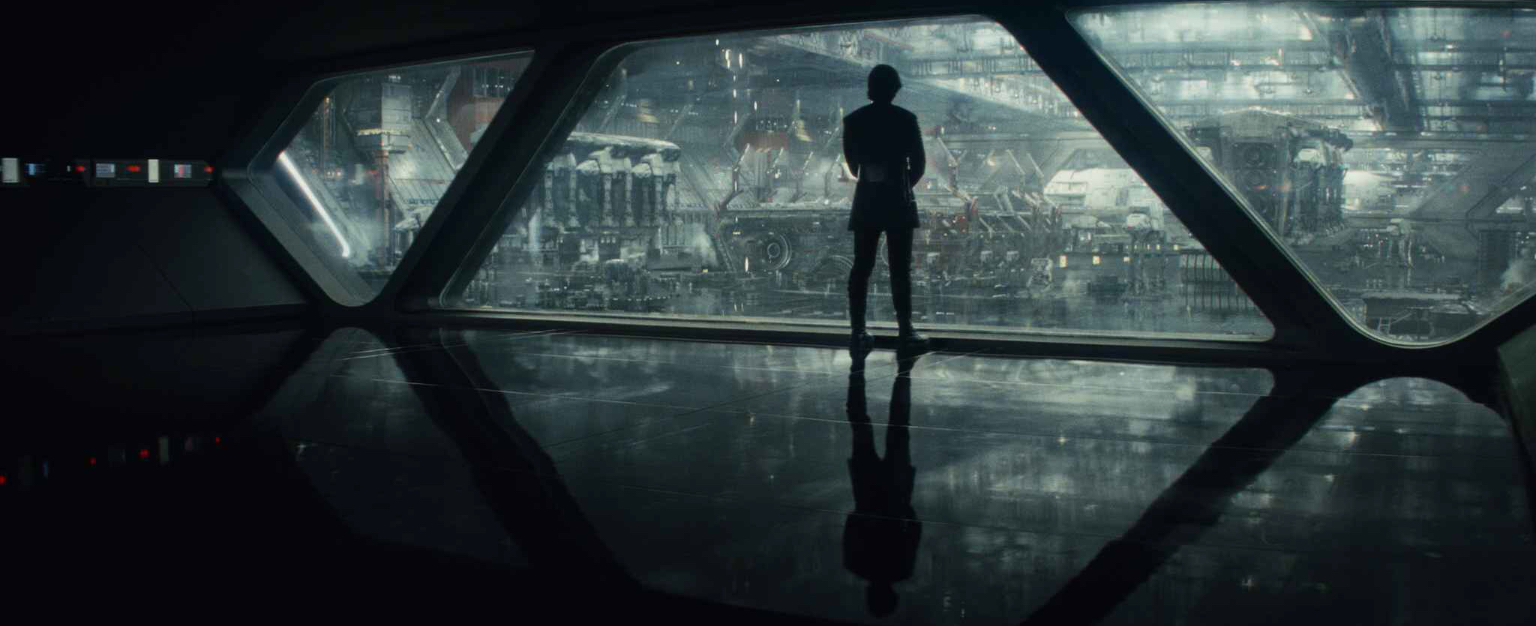
Johnson tries to illicit an air of myth and mystery on the Jedi island when Rey braves the dark cave where after a quite pleasingly surreal vision, she finds nothing but her own reflection staring back at her. It’s all very existential but is really nothing more than a callback to the scene on Dagobah in The Empire Strikes Back where Luke enters a similarly dark cave and finds that the enemy he seeks might be himself. After Rey decides to leave the moping and curmudgeonly Luke Skywalker with his Porgs and whatever those other creatures are, Luke receives a visit from none other than Force-ghost Yoda. Now this scene on paper is the exact sort of thing I’d want to see in this film especially as Yoda was once more created with an animatronic puppet and voiced by Frank Oz. Unfortunately the resultant onscreen incarnation looks distractingly different to the Yoda from Empire and Jedi. There’s something very much wrong with his face, especially the mouth, and it pulled both me and my friends out of the film and all but ruined what should have been a brilliant scene. The idea was sound but the execution unacceptably shoddy. And should Force ghosts really be able to summon lightning? Just saying.
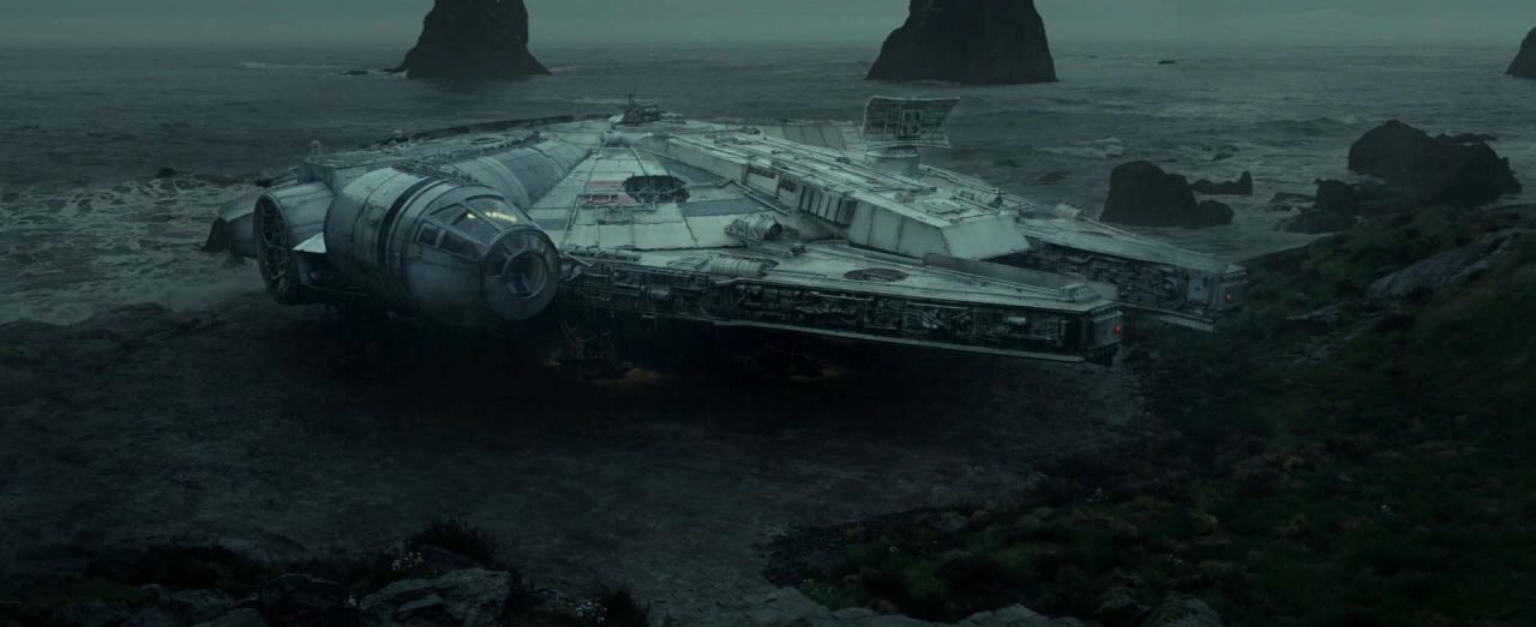
So then, so far nothing but negativity you might well say and you’d be right. I simply don’t think that any of these things I’ve highlighted, most of which are issues with the film’s writing, are acceptable given the resources at Lucasfilm’s disposal and the wealth of ideas from which to potentially mine given the amount of books and other related media on Star Wars that’s surfaced over the years. But let’s look at what the film gets right. Daisy Ridley’s performance, whilst a tiny bit wooden in the first film, is much more assured here and I really did like her character a great deal more. The way the reveal of her origin is handled, namely that she isn’t anyone special, that her parents likely sold or abandoned her, was the perfect way to go and thankfully avoided any of the predicted “daughter of Luke” type of contrivances which would have made the Star Wars Universe seem a lot smaller.
Adam Driver makes the most of what he’s given and his scenes with Ridley where their characters share a psychic link of sorts, are extremely well done and are a refreshing new display of the Force. The attempts by the one to seduce or save the other are brilliantly played by both actors and I’d hoped above hope that we’d see something we haven’t seen before – someone come back from the dark side without dying in the process. It would have made for such refreshing viewing to see a now redeemed Ben Solo shed his dark persona and face down the First Order alongside Rey whilst dealing with the obvious distrust of the rebels whom he once hunted. Alas this wasn’t to be and whilst the manner in which Kylo Ren disposed of his master was quite ingenious and the subsequent team-up fight satisfyingly brutal, I still have problems with it.
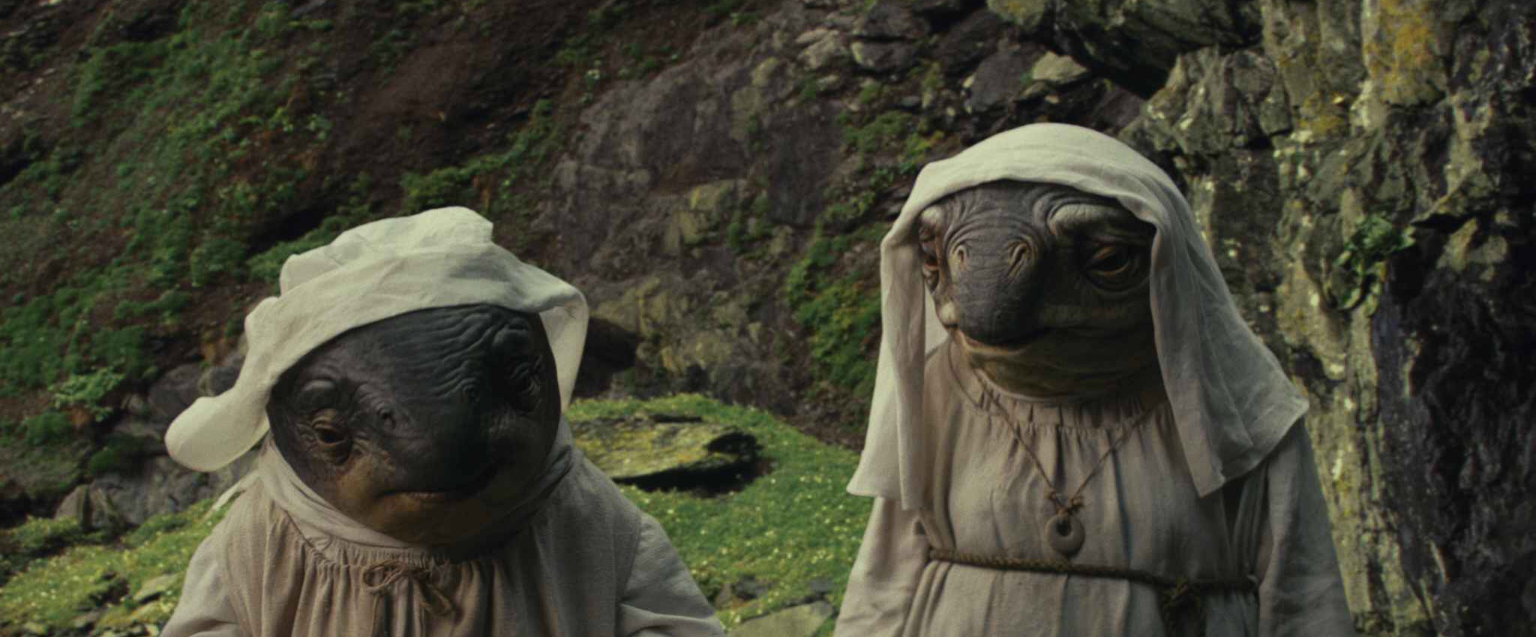
We have no explanation as to the background and origin of Supreme Leader Snoke. Such an explanation wouldn’t be required were it not for the fact that he appears to be some ancient being who is extremely adept in the Force but how does he fit in with the previous master of the Dark Side, Emperor Palpatine? He’s had but a few decades to rise to prominence and form this new iteration of the Empire but we’ve been given no backstory whatsoever as to how the First Order and it’s leader came to be. Now that he’s been dispatched we’re unlikely to have any of these questions answered. But once again I’m edging back to the negative.
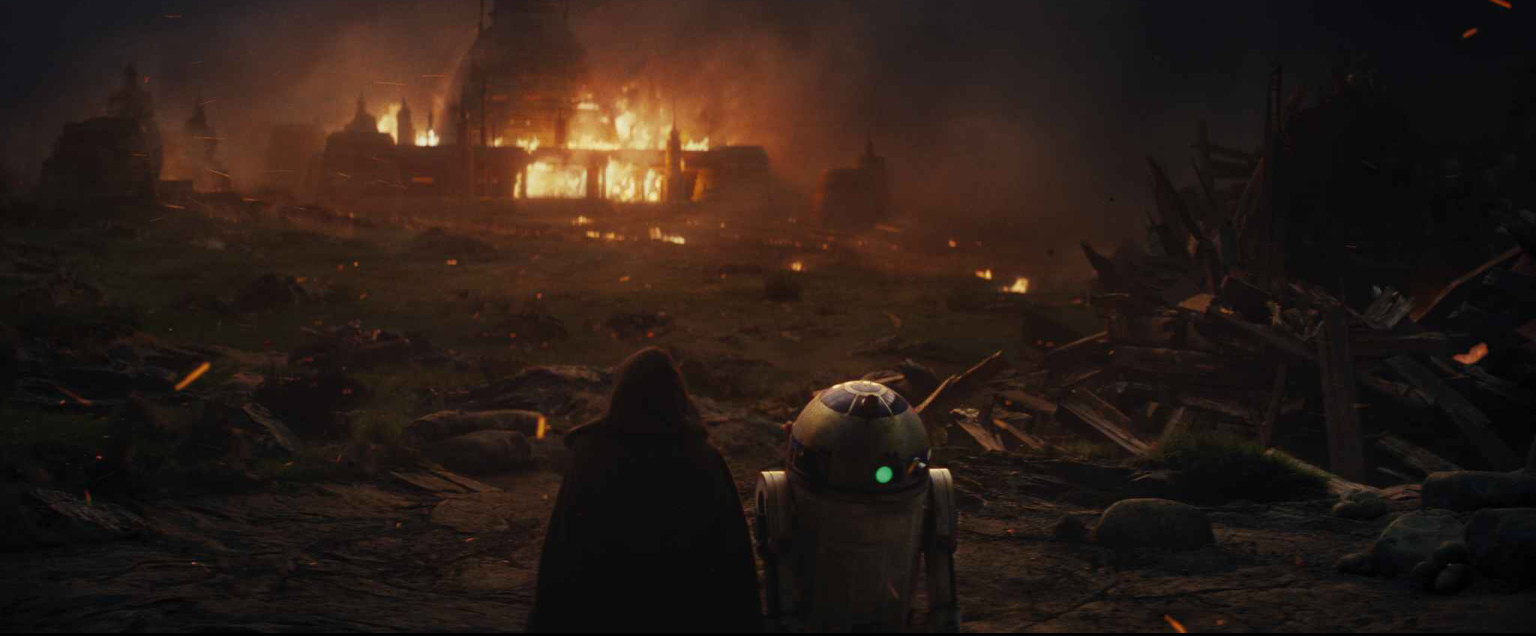
The aforementioned on-screen imagery of Vice Admiral Holdo Hyperspacing her ship through the pursuing fleet was jaw dropping and something we’ve never seen before and was met with gasps of awe from the crowd I was with. Then again, in the days that have passed I’ve thought of how much more impactful that scene would have been if the character making the sacrifice was one whom we cared about. Laura Dern’s character was only introduced halfway through The Last Jedi so we barley knew her and as a result she wasn’t fleshed out to any reasonable degree. Now imagine if instead of having a very unceremonious death in the explosion that miraculously didn’t kill Leia, that Admiral Ackbar had instead filled the role of Holdo and it had been him, a true fan favourite, that had been admonishing Poe for his recklessness. Furthermore, imagine if it had been Admiral Ackbar, a hero of the Battle of Endor, who had stayed behind to sacrifice himself for the rebels. The same scene but with so much more emotional heft behind it and some satisfying payoff for us lifelong fans.
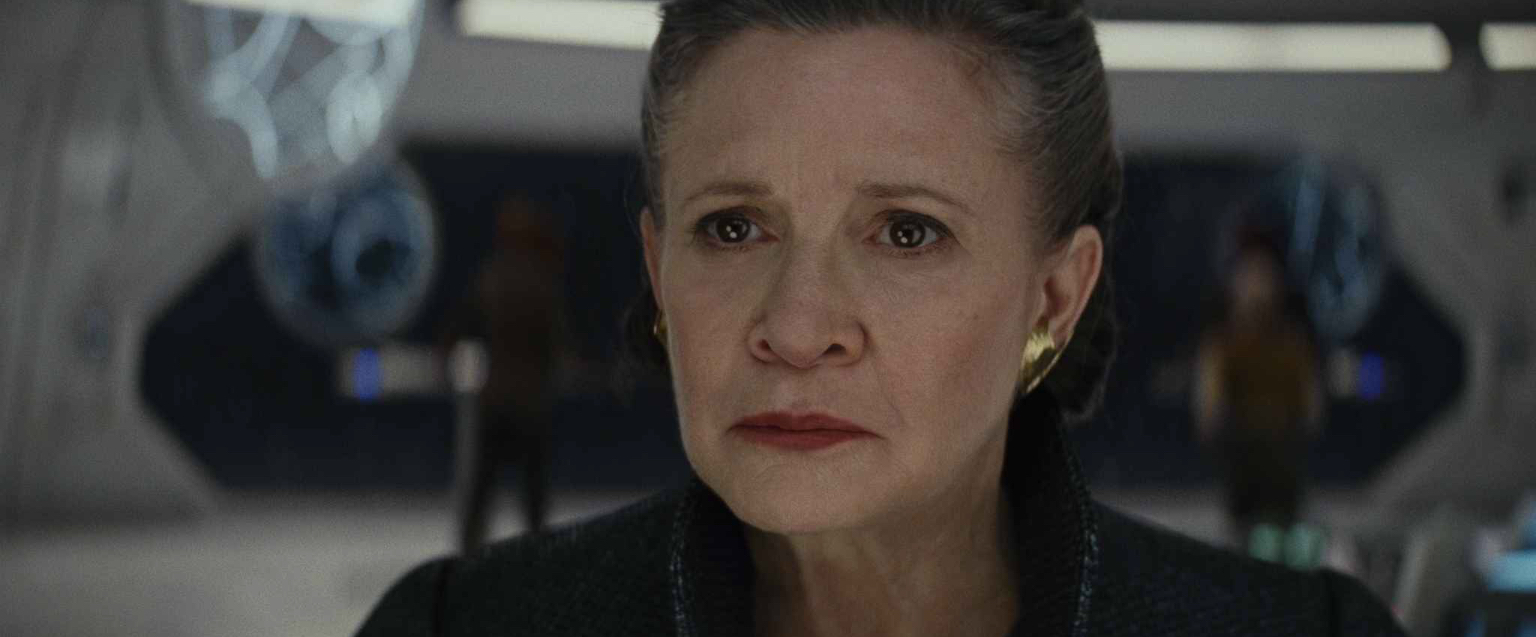
Following the decimation of the First Order fleet, Finn takes on Captain Phasma in hand-to-hand combat. Having been woefully underused in The Force Awakens, she’s unceremoniously despatched here. So yet another underdeveloped character is offed leaving me mostly unaffected as I’d formed no bond of familiarity with them and therefore their death is robbed of any true weight.
Now, the last act with the rebels holing up on the salt covered planet of Crait looked wonderful. The contrasting white salt flats, high cliffs and beautiful blue and later red skies made for some satisfying eye candy. The sight of huge lumbering walkers evoked in me a reminiscence of the Battle of Hoth from The Empire Strikes Back yet the final execution was lacking. When Finn flies his ship directly into the huge canon that’s blasting the rebel base (best not to ask how his flimsy ship can withstand a beam that’s burning through the metres thick door to the base), my anticipation peaked as it seemed that his character was going to meet an incredibly heroic end by sacrificing himself for his friends. The pending emotional payoff was ripped away as Rose flew her ship into his, knocking him out of harms way. Once again it seems that any guts or daring on the part of this story just isn’t allowed. The safe route always seems to be the way these new core characters are taken. There’s never any sense that they’re at risk because the script is entirely risk averse when it comes to Rey, Finn, Poe or any of the new faces. Any that are offed are done so in a mostly unceremonious fashion and those that do meet a heroic end, such as Holdo, aren’t characters that we’re allowed the time to care about. This all smacks of poor storytelling, the basic tenets of how to form a cohesive narrative with effective character development seems completely alien to Johnson.
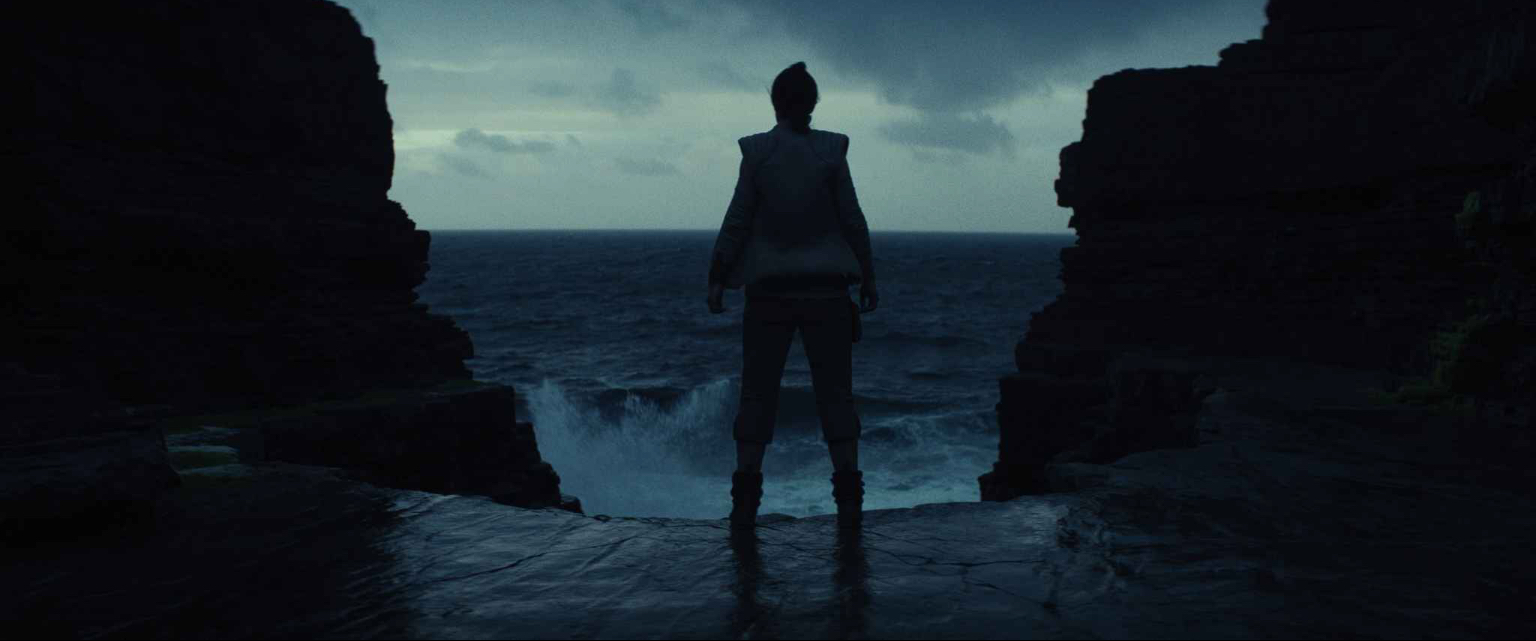
Giving the rebels such ineffective ships meant that it wasn’t really the grandstanding final battle I’d hoped for. With hindsight it was a one-sided rout aimed to set up the return to the fold of Luke Skywalker. The subsequent one-on-one fight against Uncle and Nephew should have been the equal of Luke Vs Vader in Return of the Jedi but Rian Johnson had yet another “clever” move up his sleeve.
We should have guessed the eventual rug-pull when Luke arrived on Crait looking much fresher and less grey haired than when we’d last seen him. Now I’m sure that what followed will be debated over for many months to come. As we later learn, Luke wasn’t really there. It was some Force-fuelled projection of Luke. He was able to give his sister a charm from the Falcon (although that later proved to be a projection too) and also interact with his surroundings. This new use of the Force is again something we haven’t seen before but the question I was left asking was, is this in keeping with the limitations or boundaries that have been set before? Is it too much of an ask to accept that Luke was able to project an interactive facsimile of himself across however many light years? I won’t attempt to answer that as again, any answer is dependant upon your point of view.
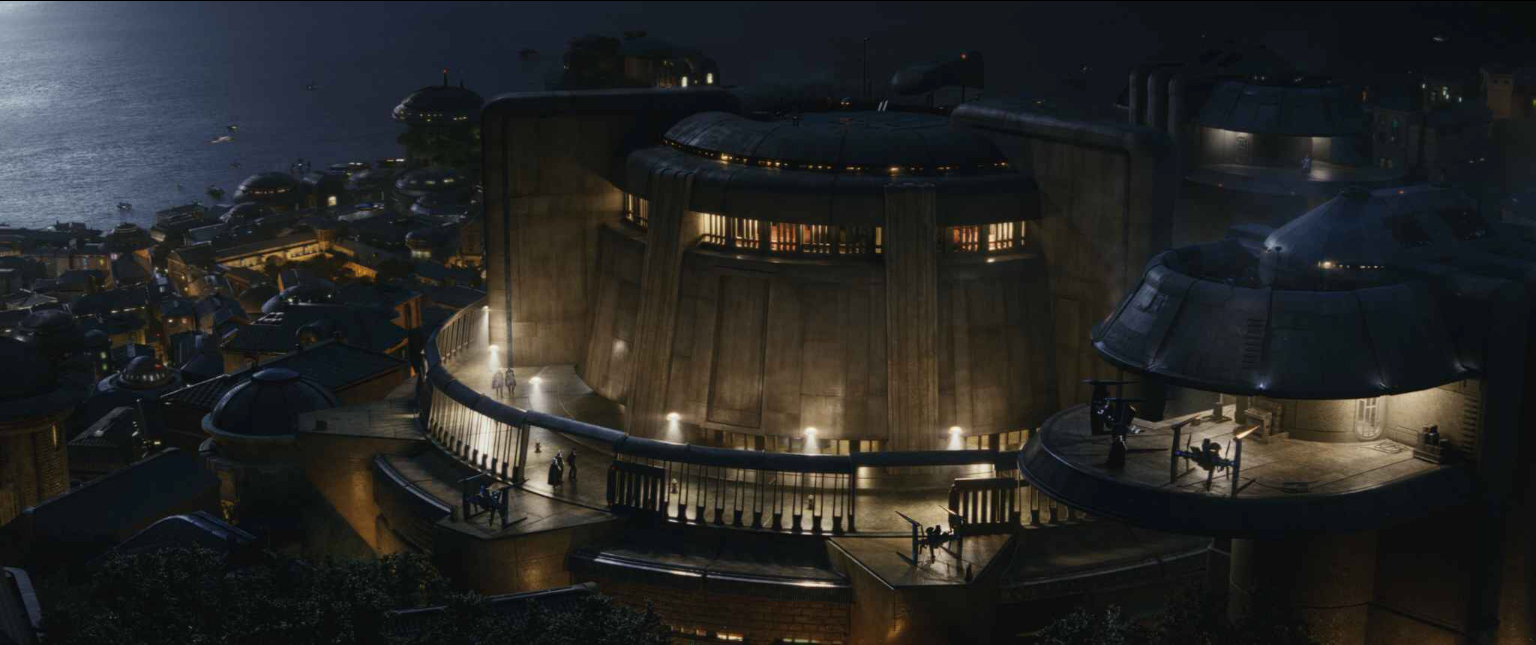
The Tie Fighters’ pursuit of the Millennium Falcon through the crystal caves is at least greatly enhanced by John Williams’ reuse of the music heard during the Death Star attacks in Star Wars (I still refuse to call it A New Hope) and Return of the Jedi. And that’s probably the last bit of positive stuff that I can find in The Last Jedi.
Luke’s eventual “death” isn’t explained to any significant degree other than it appearing that the huge exertion of maintaining this projection was too much for him and caused his ultimate demise. A sacrificial end but one that I found to be so unexpectedly odd given the twist that immediately preceded it, namely that Luke was never there on Crait in the first place, that it just felt far too much of a stretch. Any established continuity, in particular the confines of what’s possible in the Star Wars Universe, now seem completely open to abuse and any amount of fantastical new possibilities seem to be sold on the premise that it’s something we’ve never seen before. That may be the case but it doesn’t mean that what Johnson has come up with is going to get a pass for being new. It still has to be a cohesive idea in line with the established reality in which the idea is operating.

So, where have we come in two and a half hours? We’ve witnessed an almost comically illogical and drawn out space pursuit; Rey has realised her potential and bravely confronted Kylo Ren with the hope of saving him; he in turn has refused her influence and taken command of the First Order after killing his master whom we’ve learned nothing of; Poe Dameron has learnt the responsibility of leadership; Leia has, to the surprise of us all, survived the film – quite how they’ll resolve her story after the tragic loss of Carrie Fisher remains to be seen. New characters have been killed off before we got to know them and we’ve seemingly lost a major character in Luke Skywalker, whose journey in this trilogy has been limited to just one film.
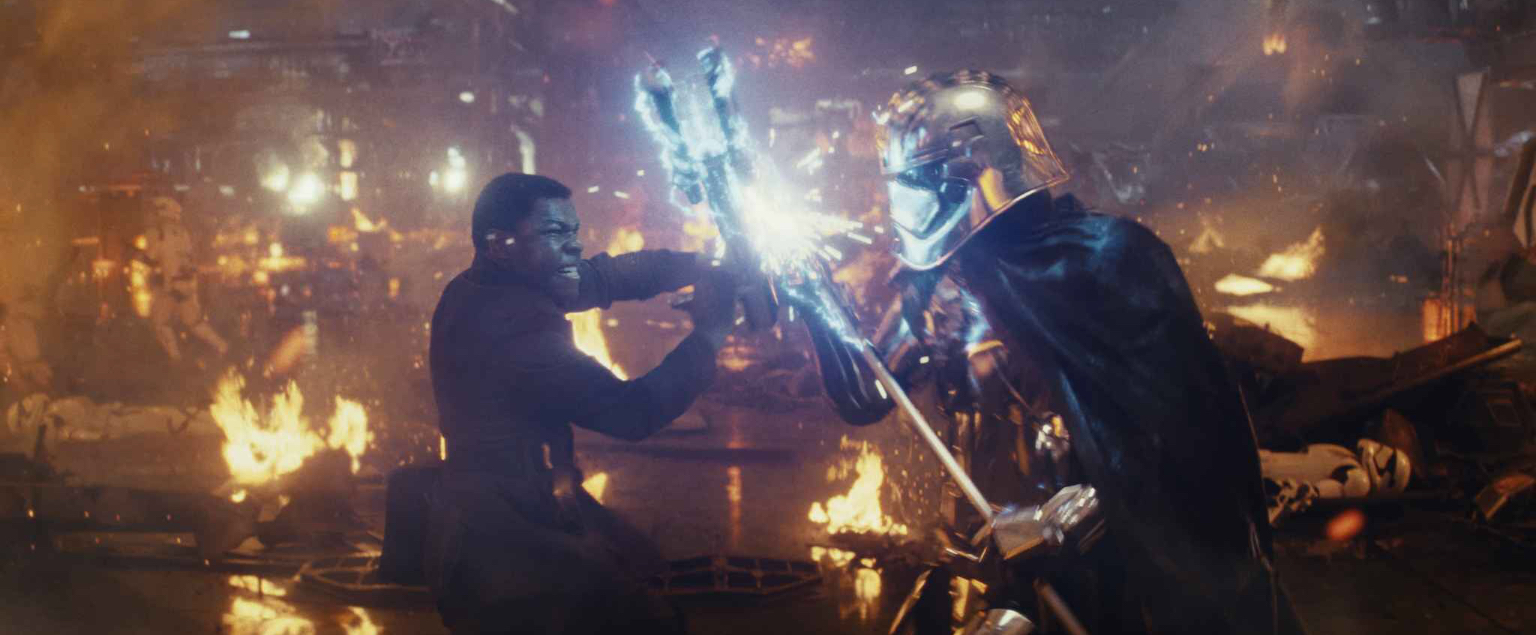
I may well be in the minority, but the short shrift Luke Skywalker has been given has left a bitter taste in my mouth. Luke is one of my most cherished of all film icons, so much so that I gave my firstborn son the middle name Luke. Whilst others of my generation may have preferred Han Solo, for me, that whiny, adventure seeking farm boy is the heart and soul of Star Wars. To see him reduced to a curmudgeonly hermit who instead of rejuvenating the Jedi and restoring them to their former glory, instead sees fit to end their legacy, may seem like a fresh twist and something unexpected, and I’m not wholly damning his treatment, but it’s not the way MY Star Wars saga should have gone. Maybe Johnson’s new twist on the evolution of the Jedi will seem fresh to a younger generation to whom the established Star Wars mythos isn’t important, but I’m not part of that particular demographic.
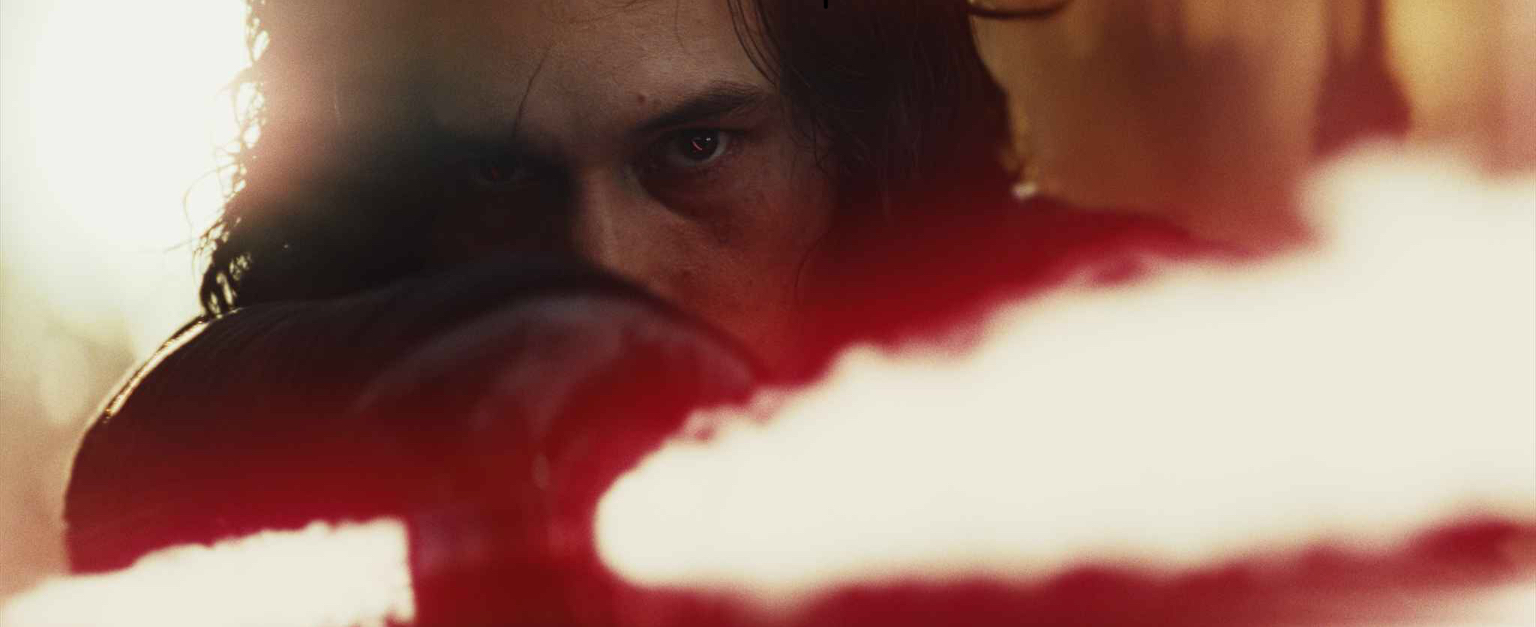 To wind things to a close (and I’m aware that many will be glad of that), this article was completed several days after seeing the film in order to properly digest what I’d seen. Over the course of those days I’ve dissected the film with friends, the majority of whom have shared my disdain and concerns over what amounts to a bitterly disappointing film. I’d hoped for and quite rightly expected a dark, brooding epic to rival The Empire Strikes Back. What I got was an alarming amount of off-kilter humour, both intentional and possibly unintentional. A film filled with truly bizarre decisions in the writing and some less than stellar execution in places. Yes, it had some jaw-dropping visuals but these are to be expected in a Star Wars film with such a big budget and such resources available to the director. It certainly feels unlike any Star Wars film I’ve seen but therein lies the problem. The difference in feel is due in great part to the proliferation of out of place and often inappropriately broad humour. In the run up to the release of The Last Jedi, Rian Johnson told us that his film would be unlike any Star Wars film we’d seen and he was certainly right.
To wind things to a close (and I’m aware that many will be glad of that), this article was completed several days after seeing the film in order to properly digest what I’d seen. Over the course of those days I’ve dissected the film with friends, the majority of whom have shared my disdain and concerns over what amounts to a bitterly disappointing film. I’d hoped for and quite rightly expected a dark, brooding epic to rival The Empire Strikes Back. What I got was an alarming amount of off-kilter humour, both intentional and possibly unintentional. A film filled with truly bizarre decisions in the writing and some less than stellar execution in places. Yes, it had some jaw-dropping visuals but these are to be expected in a Star Wars film with such a big budget and such resources available to the director. It certainly feels unlike any Star Wars film I’ve seen but therein lies the problem. The difference in feel is due in great part to the proliferation of out of place and often inappropriately broad humour. In the run up to the release of The Last Jedi, Rian Johnson told us that his film would be unlike any Star Wars film we’d seen and he was certainly right.
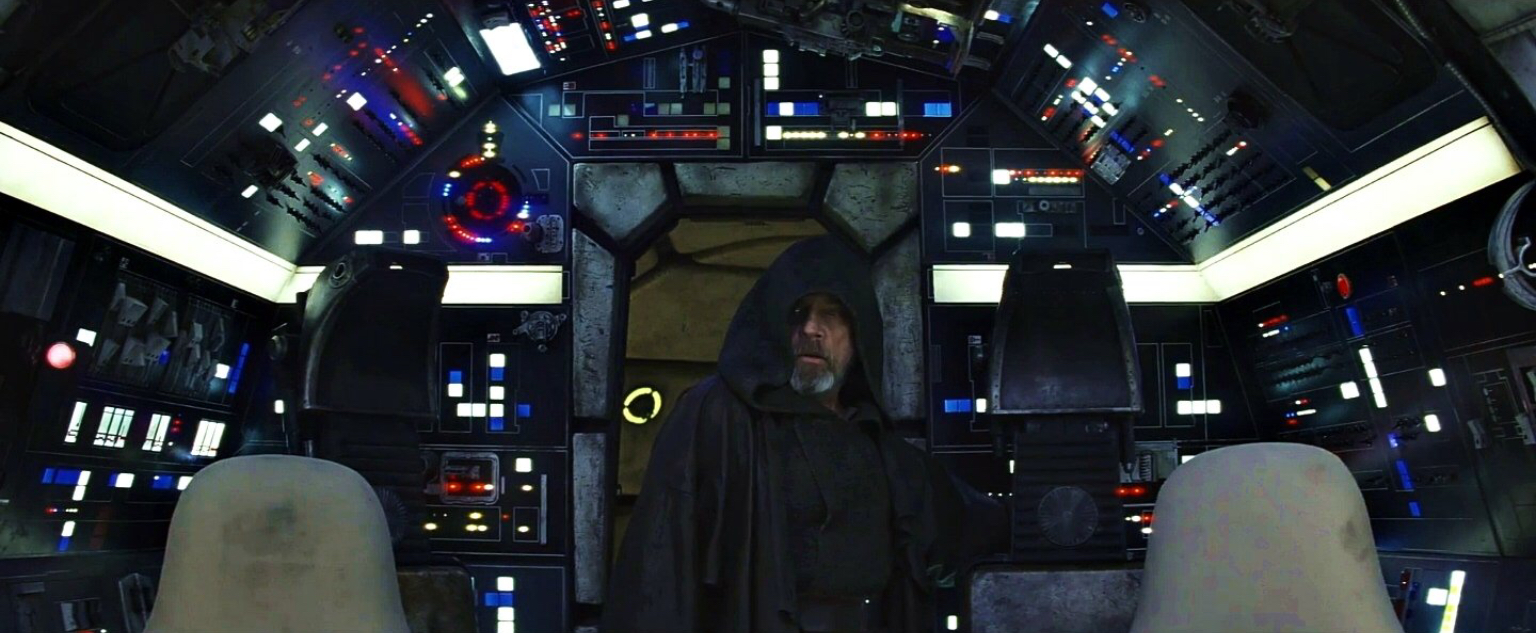 I’m fully aware of the overwhelmingly critical slant this review has taken but as always I try to justify that criticism and where possible, offer alternatives to areas of the writing that don’t sit right with me. This article certainly isn’t meant to belittle those who loved the film. If you did then I’m glad for you. I made clear my issues with The Force Awakens but hoped that the next film would add clarity to much of that film’s vagaries. Alas it hasn’t. It’s not that I have an abundance of new questions to add to those left unanswered in the previous film, it’s just that I now feel such a disconnect to these new films that I don’t really see myself caring where the story goes now, nor do I confidently believe that the filmmakers really know where it’s headed.
I’m fully aware of the overwhelmingly critical slant this review has taken but as always I try to justify that criticism and where possible, offer alternatives to areas of the writing that don’t sit right with me. This article certainly isn’t meant to belittle those who loved the film. If you did then I’m glad for you. I made clear my issues with The Force Awakens but hoped that the next film would add clarity to much of that film’s vagaries. Alas it hasn’t. It’s not that I have an abundance of new questions to add to those left unanswered in the previous film, it’s just that I now feel such a disconnect to these new films that I don’t really see myself caring where the story goes now, nor do I confidently believe that the filmmakers really know where it’s headed.
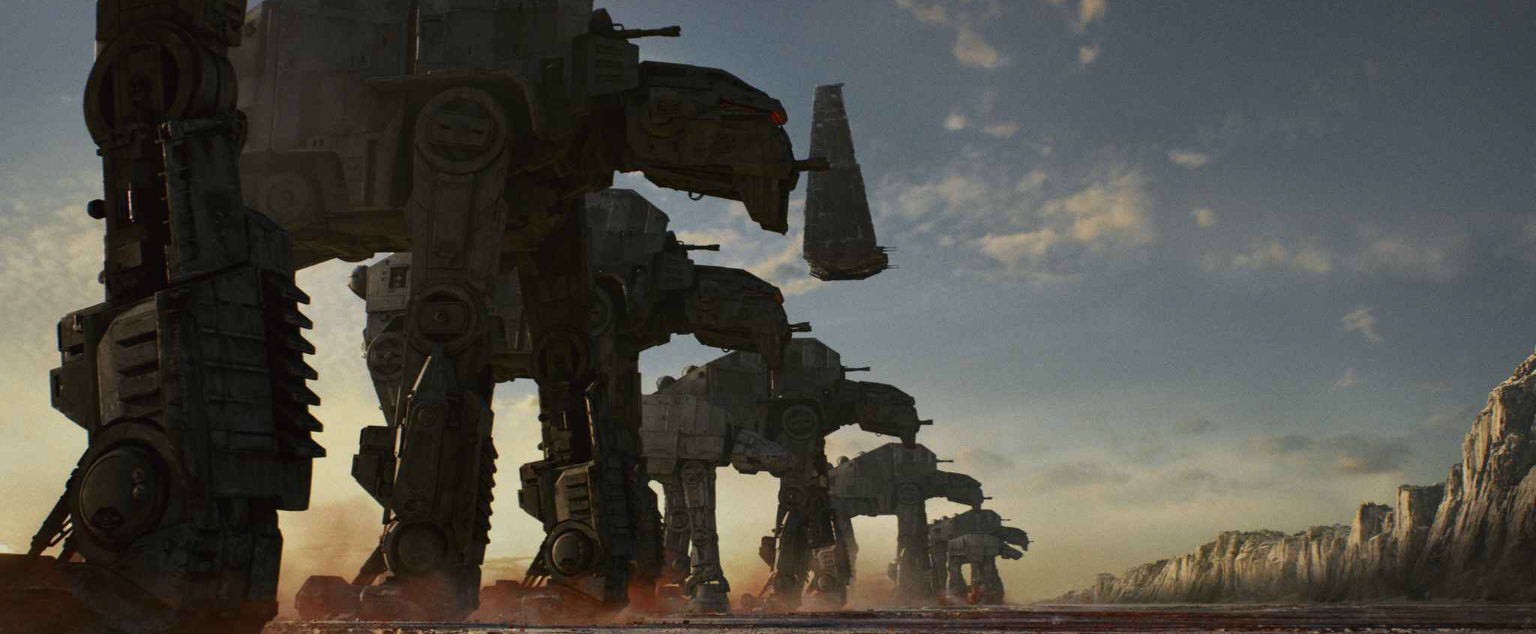 Please don’t mistake this disappointment as having anything to do with a longing nostalgia for characters from the original trilogy as that’s not the case. Rogue One introduced a slew of new characters and I genuinely loved that film. My issues with this new trilogy, aside from things like the dreadful acting of Domhnall Gleason, are what I see as clear problems with the writing and the story that’s being told. Where The Force Awakens seemed to play it safe and aim for as broad an audience as possible, The Last Jedi seems overly concerned with surprises and rug-pulls at the expense of the stability of the overall narrative. Ultimately it comes down to the fact that a large portion of the film, namely Luke’s time wasting stubbornness, most of that slow motion space pursuit and Finn’s risible subplot, just aren’t anything I’d ever want to watch again and did little to propel the main story if there even is one by this point.
Please don’t mistake this disappointment as having anything to do with a longing nostalgia for characters from the original trilogy as that’s not the case. Rogue One introduced a slew of new characters and I genuinely loved that film. My issues with this new trilogy, aside from things like the dreadful acting of Domhnall Gleason, are what I see as clear problems with the writing and the story that’s being told. Where The Force Awakens seemed to play it safe and aim for as broad an audience as possible, The Last Jedi seems overly concerned with surprises and rug-pulls at the expense of the stability of the overall narrative. Ultimately it comes down to the fact that a large portion of the film, namely Luke’s time wasting stubbornness, most of that slow motion space pursuit and Finn’s risible subplot, just aren’t anything I’d ever want to watch again and did little to propel the main story if there even is one by this point.
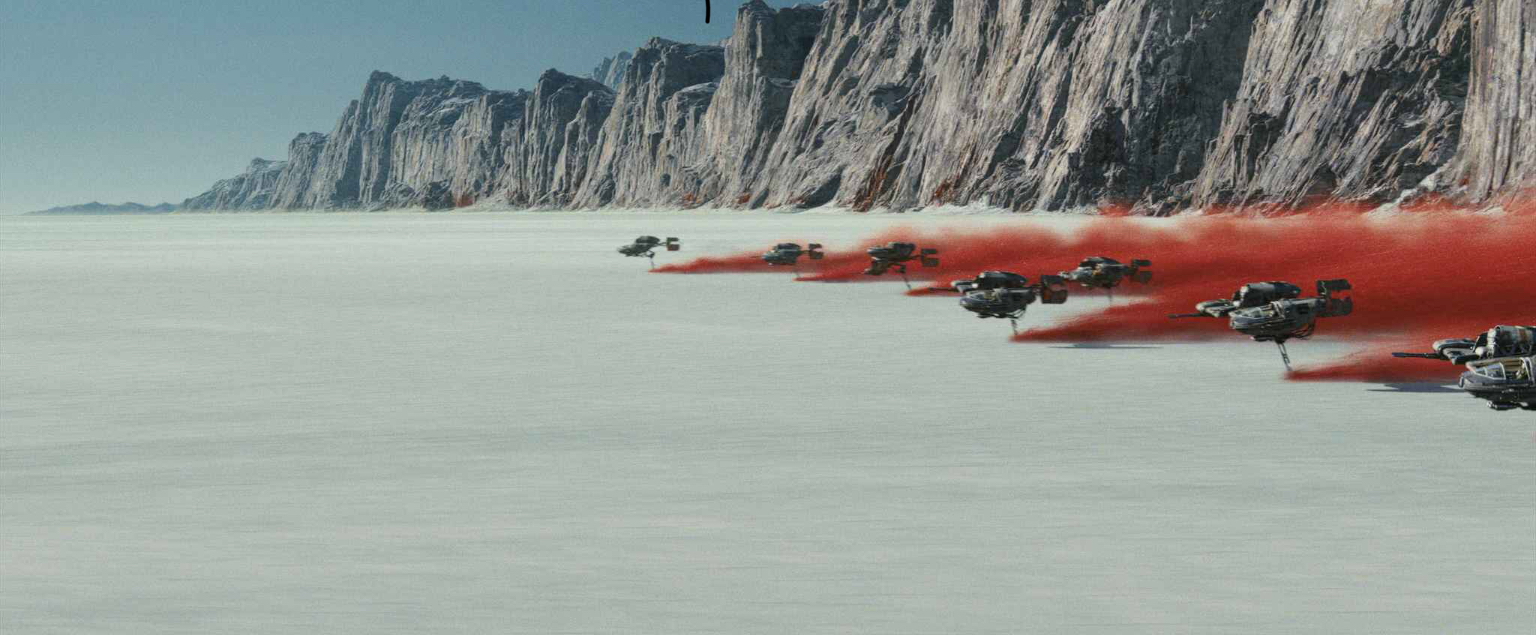 The Last Jedi finishes with a touchingly hopeful image of a young boy, a potential future Luke Skywalker, looking longingly to the stars. My own personal hopes for this new series have been dashed but maybe I should now look elsewhere. Disney/Lucasfilm are taking the Star Wars saga in several different directions with spin-off films and who knows what in the future. Yes, the saga as a whole has been sullied for me and I now only hold any genuine affection for four of the nine Star Wars films. Maybe it’s time for me to give up on Star Wars. Maybe that original trilogy (and its companion piece Rogue One) was meant for my generation and the subsequent trilogies were meant for others. Or maybe this series needs someone else at the helm, someone with a singular vision in keeping with the universe that George Lucas established (for better or worse), a filmmaker who can pull it back on track and craft a film that tells a cohesive and compelling story with richly developed characters that addresses the unanswered questions of its two preceding films and ultimately is a Star Wars film that satisfies ALL generations. Is that too much to ask? There’s always hope, just much less than there was before.
The Last Jedi finishes with a touchingly hopeful image of a young boy, a potential future Luke Skywalker, looking longingly to the stars. My own personal hopes for this new series have been dashed but maybe I should now look elsewhere. Disney/Lucasfilm are taking the Star Wars saga in several different directions with spin-off films and who knows what in the future. Yes, the saga as a whole has been sullied for me and I now only hold any genuine affection for four of the nine Star Wars films. Maybe it’s time for me to give up on Star Wars. Maybe that original trilogy (and its companion piece Rogue One) was meant for my generation and the subsequent trilogies were meant for others. Or maybe this series needs someone else at the helm, someone with a singular vision in keeping with the universe that George Lucas established (for better or worse), a filmmaker who can pull it back on track and craft a film that tells a cohesive and compelling story with richly developed characters that addresses the unanswered questions of its two preceding films and ultimately is a Star Wars film that satisfies ALL generations. Is that too much to ask? There’s always hope, just much less than there was before.
Film ‘89 Verdict – 4/10
Star Wars: The Last Jedi is on general release in the U.K. and US now.

